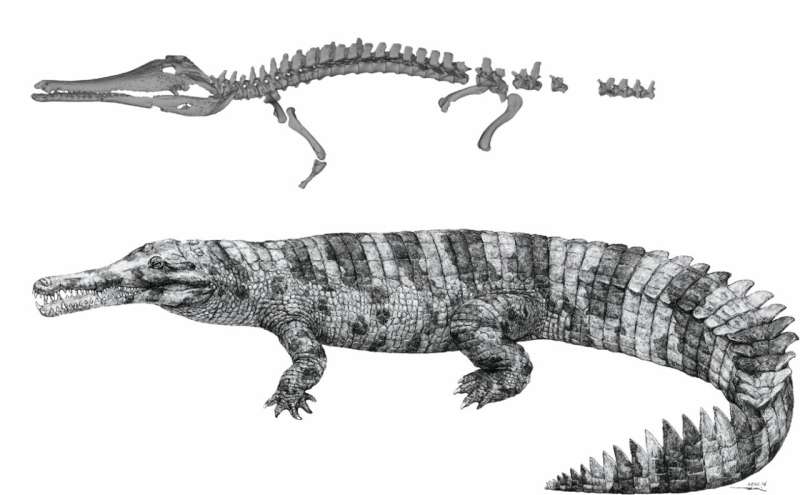March 9, 2022 report
Gharial living in China during Bronze Age help clarify history of crocodilians

A team of researchers from China, Japan and the U.S. reports that study of a Bronze Age gharial that once lived in China is clarifying some of the crocodilian history. In their paper published in Proceedings of the Royal Society B, the group describes their study of four gharial remains and which of the crocodilians was the first to evolutionarily break off from the others.
Crocodilians include alligators, crocodiles and gharials, which are crocodile-like creatures with thinner snouts. There are just two species alive today, one in India and some of its surrounding countries, and the other in Indonesia and Malaysia. In this new effort, the researchers took a second look at some of the remains of four crocodilians that had for many years been labeled as crocodile skeletons and found them to be gharials. All of the bones had been found at a dig site in southeast China. The researchers named them collectively Hanyusuchus sinensis, after a famous Chinese poet and politician. To date, three of the specimens have been carbon dated, showing them to be from about 3,000 years ago, during the Chinese Bronze Age. The researchers also found that one of the skulls had multiple chop marks on it, suggesting that it had been killed and decapitated by humans using tools.
The researchers theorize that humans drove the species to extinction both by attacking them and by encroaching on their habitat with rice paddies. They also note that there have been anecdotal accounts of people in the area seeing the creatures alive as recently as 500 years ago. The researchers guess that they were probably still around until approximately 300 years ago.
The researchers also found gavialine and tomistomine features in H. sinensis that they say clarify the crocodilian family tree—including a novel pterygoid bulla. They suggest these features along with genetic evidence indicate that alligators were the first to branch off from the original crocodilian, followed by gharials and crocodiles separating from one another some time later. They acknowledge that the finding seems counterintuitive, since alligators and crocodiles more closely resemble each other than gharials.
More information: Masaya Iijima et al, An intermediate crocodylian linking two extant gharials from the Bronze Age of China and its human-induced extinction, Proceedings of the Royal Society B: Biological Sciences (2022). DOI: 10.1098/rspb.2022.0085
Journal information: Proceedings of the Royal Society B
© 2022 Science X Network





















